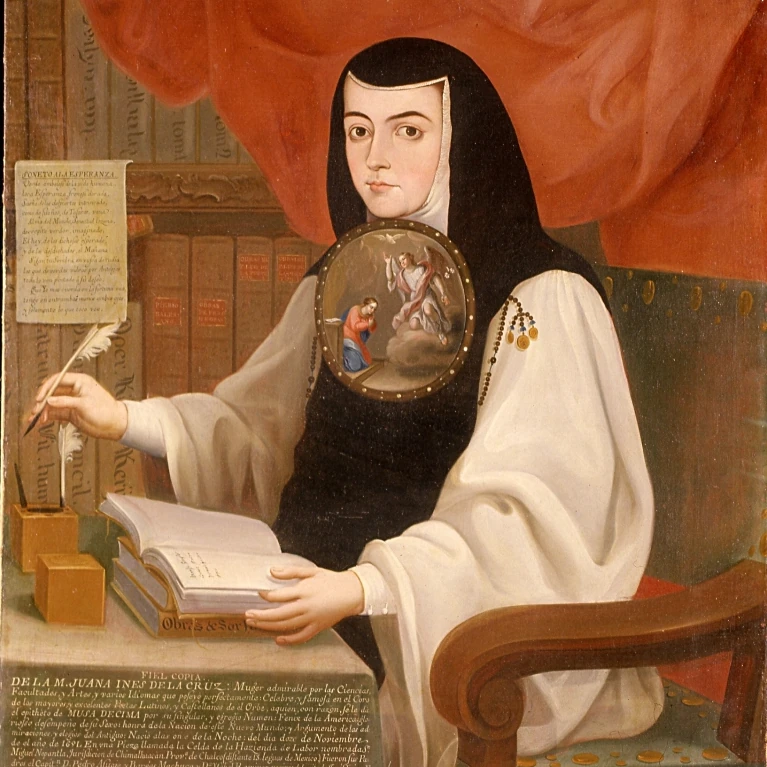“Plus ultra! ¡Más Mundos hay!” – Discurso criollo y autoría implícita en las loas sacramentales de Sor Juana Inés de la Cruz
(pp. 57-68; DOI: 10.23692/iMex.15.5)
 Loading...
Loading...PD Dr. Jutta Weiser
Jutta Weiser teaches Romance Literatures at the University of Mannheim (Germany). Her research intereses are focussed on French, Spanish and Hispano-American Literatures and Cultures, with a special interest in the relationship between literature and medicine in the 19th and 20th centuries, transatlantic literary relations, postcolonial theory, literature and painting in the baroque era, as well as the history and theory of authorship. Her habilitation thesis Poetik des Pathologischen. Medizin und Romanliteratur in Spanien (1880-1905) was published in 2013. Her recent articles: „,Tout voir, tout savoir, tout conquérir‘ – Zur Poetik des Naturalismus in Claríns La Regenta”, in: Archiv für das Studium der Neueren Sprachen und Literaturen 255/1 (2018), 123-149; „Pagane Mythen im auto sacramental: Zur transkulturellen Poetik in Sor Juanas El divino Narciso und seiner Loa (mit einem Seitenblick auf Calderóns El divino Orfeo)“, in: Romanische Forschungen 130/1 (2018), 36-69; „Del lugar infeccioso a la invasión de microbios: fantasmas coloniales entre geografía médica y bacteriología”, in: Christian von Tschilschke/Jan-Henrik Witthaus (eds.): El otro colonialismo. España y África, entre imaginación e historia. Frankfurt a.M./Madrid: Vervuert 2017, 131-148.
El presente artículo analiza la metateatralidad y la autoestilización de Sor Juana en las loas que preceden a los autos sacramentales El Mártir del Sacramento, San Hermenegildo y El Divino Narciso, partiendo de la hipótesis de que Sor Juana usa figuras autoriales para poner de relieve su autoridad como escritora criolla y mujer letrada en el Virreinato de Nueva España. Interpretado desde el ángulo de la conciencia criolla, la autora implícita se posiciona entre el nuevo y el viejo mundo conociendo ambos sistemas epistemológicos desde dentro. De este modo, intercede en favor de un pluralismo epistemológico, propio del discurso criollo que se caracteriza por su tendencia transculturadora y sus esfuerzos de mediar entre la cultura occidental y las tradiciones indígenas de América.
The present article analyses Sor Juana’s metatheatrality and self-fashioning in the loas that precede the autos sacramentales El Mártir del Sacramento, San Hermenegildo and El Divino Narciso, starting from the hypothesis that Sor Juana uses authorial figures to highlight her authority as Creole writer and educated woman in the Viceroyalty of New Spain. Interpreted from the angle of the Creole consciousness, the implied author positions herself between the new and the old world, knowing both epistemological systems from the inside. In this way, she intercedes in favour of an epistemological pluralism, which is typical of the Creole discourse characterized by its transcultural tendency and its efforts to mediate between the western culture and the indigenous traditions of America.
Claudia Jünke / Jutta Weiser - Editorial
Sara Poot Herrera – Documentos alrededor de Sor Juana
Beatriz Colombi – Figuraciones del mecenazgo y la autoría
Francisco Ramírez Santacruz – Las riquezas del Nuevo Mundo y el ingenio indiano
Jutta Weiser – Discurso criollo y autoría implicita
Claudia Jünke – Identificación y diferencia cultural
Agnieszka Komorowska – Construyendo el espacio teatral criollo
Verónica Grossi – La transformación del código petrarquista
Patricia Saldarriaga – La geometrización del poder
Kurt Hahn – La marginalidad puesta en el centro
Reviews



